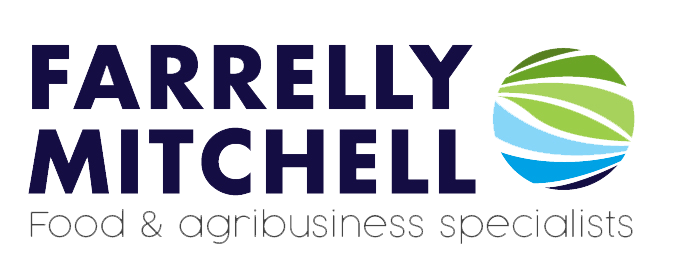Global food trade operates within a complex web of food safety assurance standards that function as both protection mechanisms and strategic trade barriers. The European Union, United States, and United Kingdom enforce fundamentally different food safety regulations, creating an environment where regulatory compliance determines market access more than traditional tariffs. These divergences reflect competing philosophies about risk, food safety assurance and consumer protection that have profound implications for global food trade.
This analysis examines how specific food safety standards create trade friction, function as diplomatic bargaining tools, and steer global agri-food supply chains. These converging forces significantly impact global agritrade and are fundamentally reshaping how multinational food businesses approach supply chain management and strategic planning.
Different approaches to food safety assurance
The EU delivers food safety assurance by applying the precautionary principle of not approving substances until proven safe, whereas the US often permits substances until evidence of harm emerges. These regulatory nuances force multinational food businesses engaged in global agritrade to navigate multiple compliance requirements. Numerous examples exist of how food safety regulation differs across the US, UK, and EU.
Growth hormones in beef
The EU banned hormone-treated beef in 1989 on precautionary grounds, establishing food safety standards that prohibit imports from animals given growth stimulants. The US, on the other hand, deems certain growth hormones safe under regulatory limits and allows their use without mandatory labelling.
Interestingly, after the EU’s hormone ban took effect, the US challenged it through the WTO, which ruled in 1997 that the blanket prohibition lacked proper scientific risk assessment. Rather than comply, the EU conducted its own studies to support its position and maintained the ban. The US retaliated with 100% tariffs on some European products, creating a decade-long trade war that ended only in 2009 with a negotiated compromise allowing limited hormone-free beef quotas.
Although no longer part of the EU, the UK has maintained its hormone ban post-Brexit. Naturally, these differing food safety philosophies impact exporters who often must segregate production. For instance, Australian beef producers typically manage herds for hormone-free exports to the EU/UK independent of other herds. This inevitably increases costs but also helps ensure market access.
Pathogen reduction treatments in poultry
Another flashpoint in food safety standards is the different approaches US and EU regulators take to ensure poultry meat is free of pathogens like salmonella. American processors commonly use pathogen reduction treatments such as chlorine washes and the application of organic acids to kill bacteria, whereas the EU banned such chemical rinses in 1997, insisting that farms and slaughterhouses prevent contamination through strict hygiene rather than washing away bacteria post-slaughter. This policy effectively eliminated US poultry exports to Europe. As before, the UK also maintains these same standards post-Brexit, making “chlorinated chicken” emblematic of broader food safety assurance concerns.
Labelling and regulatory differences as trade barriers
Other discrepancies in food safety regulation are similarly consequential. For instance, the EU demands strict GMO labelling for products containing over 0.9% modified ingredients and requires mandatory country-of-origin labelling, while US requirements are far less stringent. The EU also maintains higher food additive standards, banning substances such as ractopamine (a feed additive used in US pork production). Once again, these regulatory disparities constitute major obstacles that severely restrict, if not entirely prohibit, American pork exports to Europe.
The EU’s stringent approach to food safety assurance functions as a powerful non-tariff barrier and strategic leverage point in international trade negotiations, determining market access and diplomatic relationships in global food trade. For instance, during the Transatlantic Trade and Investment Partnership (TTIP) negotiations from 2013 to 2016, food safety standards were one of the primary obstacles to a comprehensive US-EU trade deal. European public opposition to softer food safety standards became so intense that it contributed to TTIP’s ultimate collapse and led to the weaponising of these standards, with the US framing EU restrictions as disguised protectionism costing American producers hundreds of millions in annual revenue, and the EU presenting them as non-negotiable values that reflect precautionary principles and ensure greater food transparency.
Brexit inevitably created a fresh opportunity to renegotiate the UK’s food safety standards. American negotiators viewed the UK’s departure from the EU as a chance to finally access British markets. However, thus far the UK government has faced intense domestic pressure to maintain EU-level food safety standards, with ministers repeatedly pledging never to compromise on them. Naturally, this stance has reignited a stalemate with the US and has also complicated negotiations with other nations, like Australia.
Strategic implications for industry leaders
For multinational food businesses, food safety standards create shifting risks and opportunities. Export markets can open or close based on diplomatic breakthroughs or retaliatory measures. Companies must closely monitor their own technical compliance requirements as well as broader political dynamics. Governments’ willingness to use their standards for food safety assurance as a diplomatic bargaining tool means that today’s food producers must remain agile and adaptable to shifting regulatory requirements. It is only by staying informed that companies can turn food safety regulation compliance into a competitive edge and ensure that they avoid costly pitfalls and seize upon emerging opportunities.
Here at Farrelly Mitchell, we are aware that differing regional regulations regarding food safety assurance and transparency requirements are a defining feature of global food trade. Our food and beverage experts have a deep and nuanced understanding of policy and regulation, food traceability and transparency, and food safety requirements. We provide specialised guidance on supply chain dynamics, food safety assurance, and trade barriers, helping industry leaders navigate them as part of a broader strategy. To learn more about how we can help your organisation, contact us today.














